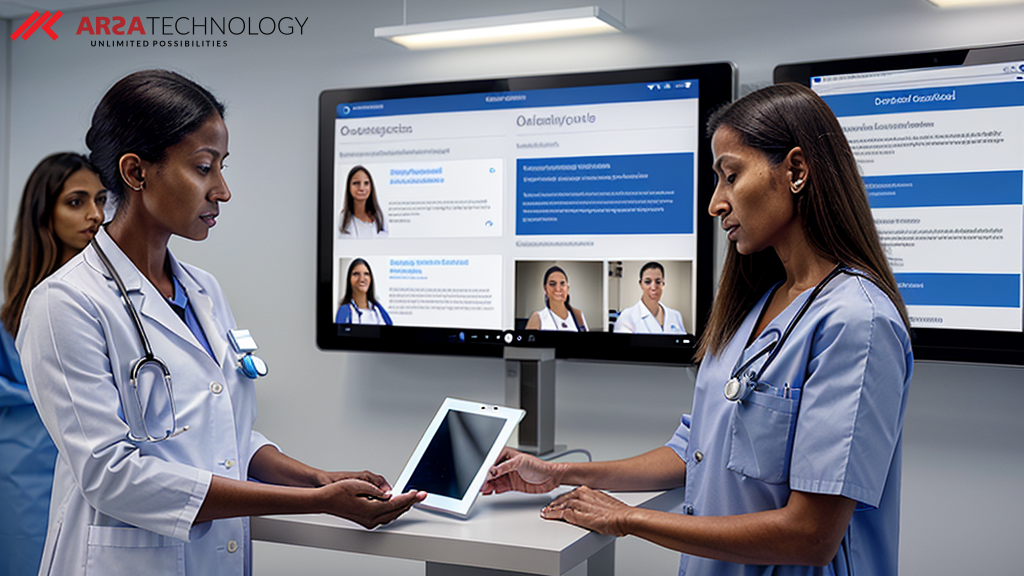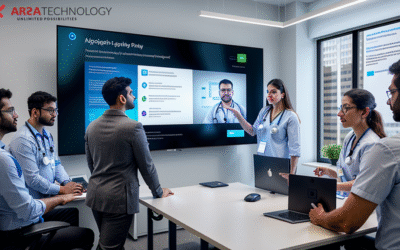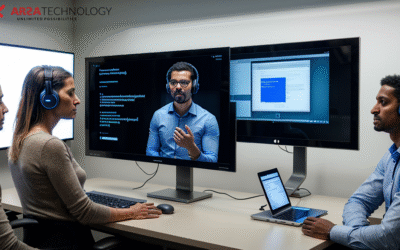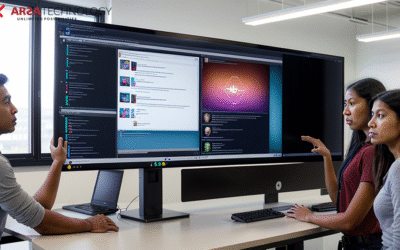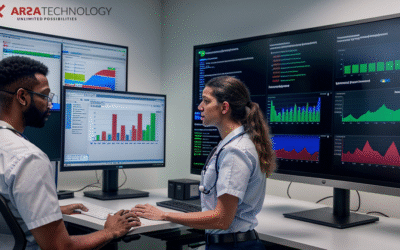Introduction: Overcoming Manual and Inefficient Workflows in the Healthcare Industry
The healthcare industry stands at the precipice of a digital transformation, yet many organizations grapple with persistent challenges rooted in manual and inefficient workflows. From patient registration to accessing sensitive medical records, traditional verification processes are often cumbersome, time-consuming, and susceptible to human error and fraud. This inefficiency not only strains operational resources but also compromises the security and integrity of patient data, directly impacting patient experience and trust.
In an era where digital onboarding is becoming the norm, ensuring the identity of individuals interacting with healthcare systems is paramount. Legacy systems and less sophisticated identity verification methods frequently fall short, creating vulnerabilities that can lead to significant financial losses, regulatory non-compliance, and damage to an organization’s reputation. The core pain point is clear: how can healthcare providers transition from outdated, manual verification to a secure, streamlined, and highly efficient digital onboarding process that protects both patients and providers?
ARSA Technology offers a robust solution: the Face Liveness Detection API. This article serves as a comprehensive migration guide, illustrating how healthcare organizations can seamlessly switch to ARSA’s advanced anti-spoofing technology, transforming their digital onboarding and fortifying their defenses against sophisticated presentation attacks and identity fraud.
The Imperative for Advanced Biometric Security in Healthcare
Healthcare organizations operate under stringent regulatory frameworks, such as HIPAA, which mandate the highest standards for patient data privacy and security. The digital landscape, however, presents an ever-evolving threat environment. Traditional methods of identity verification – relying on physical documents, knowledge-based authentication, or simple facial recognition without liveness checks – are no longer sufficient to combat the ingenuity of fraudsters.
Sophisticated presentation attacks, where fraudsters use photos, videos, masks, or even deepfakes to impersonate legitimate users, pose a significant risk. These attacks can lead to unauthorized access to medical records, fraudulent insurance claims, and compromised patient care. The consequences extend beyond financial loss, encompassing legal liabilities, erosion of patient trust, and severe reputational damage.
Secure digital onboarding, therefore, is not merely a convenience; it is a critical security imperative. It requires a solution capable of distinguishing between a live human being and a fraudulent attempt at impersonation. This is where advanced liveness detection, a cornerstone of biometric security, becomes indispensable. It acts as the first line of defense, ensuring that only genuine users gain access to sensitive healthcare services and information.
Understanding the Limitations of Legacy Systems and Other APIs
Many healthcare providers currently rely on a patchwork of legacy systems or less advanced biometric APIs that struggle to meet the demands of modern security threats. These systems often present several critical limitations:
- Vulnerability to Presentation Attacks: Older or basic facial recognition systems may lack sophisticated anti-spoofing capabilities, making them susceptible to simple photo or video attacks. This leaves a gaping hole in your security posture.
- High False Positive/Negative Rates: Inaccurate liveness detection can lead to legitimate patients being denied access (false negatives), causing frustration and support overhead, or fraudsters gaining access (false positives), leading to security breaches.
- Poor User Experience: Cumbersome verification steps, requiring multiple actions or specific lighting conditions, can deter patients from completing digital onboarding, increasing abandonment rates and reducing engagement.
- Integration Complexity and Cost: Integrating outdated systems can be a developer’s nightmare, involving significant custom code, maintenance overhead, and a lack of scalability, ultimately driving up operational costs.
- Lack of Scalability and Global Reach: As healthcare expands globally and adopts telemedicine, solutions must scale effortlessly and perform reliably across diverse demographics and technical environments. Many legacy systems simply cannot keep pace.
- Manual Review Bottlenecks: When automated systems fail or are uncertain, they often fall back to manual review processes. This reintroduces the very inefficiency and human error that digital solutions are meant to eliminate, creating bottlenecks and delaying patient access.
These limitations translate directly into increased operational costs, decreased patient satisfaction, and heightened exposure to fraud and compliance risks. The need for a robust, reliable, and user-friendly liveness detection API is not just a technical preference but a strategic business necessity for the healthcare industry.
Why ARSA Technology’s Face Liveness Detection API Stands Apart
ARSA Technology’s Face Liveness Detection API is engineered to overcome the shortcomings of conventional systems, providing a superior solution for secure digital onboarding in healthcare. Our API is built on cutting-edge AI and machine learning algorithms, designed specifically for robust presentation attack detection (PAD).
Here’s how ARSA’s solution delivers unparalleled value:
- Unrivaled Anti-Spoofing Capabilities: Our API employs sophisticated techniques to differentiate between a live human face and various spoofing attempts, including 2D photo prints, screen replays, 3D masks, and even advanced deepfakes. This robust defense ensures that only genuine users can proceed with verification.
- High Accuracy, Low Friction: We prioritize both security and user experience. Our API delivers high accuracy rates, minimizing false positives and negatives, while maintaining a smooth, intuitive verification process for patients. This means fewer frustrated users and less manual intervention.
- Seamless Integration: Designed with developers in mind, our API offers straightforward integration, allowing your teams to quickly deploy and scale secure liveness detection within your existing applications and workflows.
- Global Performance and Scalability: ARSA Technology’s infrastructure is built for global performance, ensuring consistent accuracy and speed for users worldwide, regardless of device or environment. This scalability supports the expansion of telemedicine and international patient services.
- Directly Addresses Healthcare Pain Points: By automating and securing the identity verification process, our API directly tackles the problem of manual and inefficient workflows. It reduces the need for human review, accelerates patient onboarding, and significantly lowers the risk of fraud, allowing healthcare providers to focus on patient care.
To see the API in action and understand its capabilities firsthand, test the Liveness Detection API on RapidAPI. This interactive demo provides a clear illustration of how our technology functions to secure your digital processes.
A Strategic Migration Path: Seamlessly Integrating ARSA’s Solution
Migrating to ARSA Technology’s Face Liveness Detection API is a strategic investment that yields significant returns in security, efficiency, and patient satisfaction. The transition can be structured into clear, manageable phases, ensuring a smooth and successful deployment without disrupting critical healthcare operations.
1. Assessment and Planning: Begin by evaluating your current identity verification workflows, identifying specific pain points, and defining clear objectives for the migration. Understand how ARSA’s liveness detection will integrate into your existing patient onboarding, telemedicine, or access control systems.
2. Integration Strategy: While we avoid code examples, conceptually, integrating our API involves replacing your current liveness or identity verification calls with those directed to ARSA’s service. Our API is designed for flexibility, allowing for various integration patterns that fit your existing architecture. This phase focuses on mapping data flows and ensuring compatibility.
3. Testing and Validation: Rigorous testing is crucial. This includes functional testing to ensure the API performs as expected, security testing to validate its anti-spoofing capabilities, and user experience testing to ensure a smooth patient journey. Performance testing will confirm scalability and responsiveness under anticipated loads.
4. Phased Rollout: For large-scale healthcare systems, a phased rollout strategy is often advisable. This might involve deploying the new API to a subset of users or specific applications first, gathering feedback, and making any necessary adjustments before a full-scale launch.
5. Monitoring and Optimization: Post-migration, continuous monitoring of API performance, security metrics, and user feedback is essential. ARSA Technology is committed to providing ongoing support to help you optimize your implementation and adapt to evolving security landscapes.
The benefits of switching are tangible:
* Enhanced Security Posture: Significantly reduce the risk of identity fraud and presentation attacks.
* Operational Efficiency: Automate verification, reduce manual review queues, and free up staff for higher-value tasks.
* Superior Patient Experience: Provide a faster, more reliable, and less intrusive onboarding process.
* Cost Savings: Minimize losses due to fraud and reduce the operational overhead associated with inefficient manual checks.
* Improved Compliance: Strengthen your adherence to data privacy and security regulations.
Should you require assistance or have specific integration questions during your migration, please do not hesitate to contact our developer support team. We are here to ensure your transition is seamless and successful.
Realizing Business Value: Transforming Healthcare Onboarding
The migration to ARSA Technology’s Face Liveness Detection API translates directly into measurable business value for healthcare organizations. By eliminating manual and inefficient workflows, you unlock a cascade of benefits that impact both the bottom line and patient care.
Consider the impact on key areas:
- Accelerated Patient Onboarding: Reduce the time it takes for new patients to register and access services. This means faster access to care, higher patient satisfaction, and increased operational throughput.
- Drastic Reduction in Fraud: By effectively blocking presentation attacks, you protect against fraudulent access to medical records, prescription fraud, and illicit insurance claims, saving significant financial resources.
- Strengthened Compliance and Trust: Demonstrating a commitment to advanced security measures helps meet regulatory requirements and builds invaluable trust with patients, who are increasingly concerned about the privacy of their health data.
- Optimized Resource Allocation: Automating identity verification frees up administrative and clinical staff from time-consuming manual checks, allowing them to focus on core patient care responsibilities.
- Enhanced Telemedicine Security: As telemedicine continues to expand, secure identity verification is crucial. ARSA’s API ensures that virtual consultations and remote access to health services are protected against impersonation, making telemedicine safer and more reliable.
Imagine a scenario where a patient can securely onboard for a new service via their mobile device in minutes, knowing their identity is protected by state-of-the-art anti-spoofing technology. Or a healthcare provider can confidently grant access to sensitive patient portals, assured that the user is genuinely who they claim to be. This is the transformative power of integrating ARSA’s Face Liveness Detection API – moving from reactive fraud detection to proactive fraud prevention, and from cumbersome processes to seamless, secure digital experiences.
Beyond Liveness: Expanding Your AI Capabilities with ARSA Technology
While Face Liveness Detection is a critical component of secure digital onboarding, ARSA Technology offers a comprehensive suite of AI APIs designed to further enhance healthcare operations and patient experiences. Our modular approach allows you to build a robust, intelligent ecosystem tailored to your specific needs.
For instance, combining liveness detection with our Face Recognition API can create a powerful multi-factor biometric authentication system, ensuring not only that a user is live but also that they are the correct individual. Similarly, integrating Speech-to-Text and Text-to-Speech APIs can revolutionize patient-provider communication, enabling accessible interfaces for patients with disabilities, automating transcription of medical notes, or powering intelligent virtual assistants.
Exploring our full suite of AI APIs reveals the breadth of possibilities for innovation within your healthcare organization. From enhancing security and efficiency to improving accessibility and communication, ARSA Technology provides the building blocks for a truly intelligent and secure digital healthcare future.
Conclusion: Your Next Step Towards a Solution
The journey from manual, inefficient workflows to a secure, streamlined digital future in healthcare begins with strategic technology adoption. ARSA Technology’s Face Liveness Detection API offers a proven path to overcome critical challenges in identity verification, safeguarding patient data, preventing fraud, and significantly enhancing operational efficiency. By migrating to our advanced anti-spoofing solution, you are not just upgrading a system; you are investing in a more secure, reliable, and patient-centric healthcare experience. Take the decisive step towards fortifying your digital defenses and embracing the future of healthcare security with ARSA Technology.
Ready to Solve Your Challenges with AI?
Discover how ARSA Technology can help you overcome your toughest business challenges. Get in touch with our team for a personalized demo and a free API trial.

